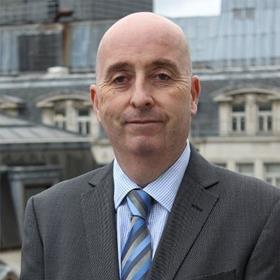Predictions of a decline in the market’s reinsurance capability seem to have been well founded, says broker chief executive
By Jon Guy
Talk is cheap – but it seems that, for insurers and their clients, the vital 1 January reinsurance renewals have delivered on the promise that they will be paying significantly more for what reinsurance they can obtain.

The four months in the run up to the start of the year had been littered with dire warnings that the amount of reinsurance in the market was contracting and that what capacity was available would be more expensive.
Reinsurance brokers took the warnings with a dose of salt, believing that they masked underwriters’ willingness to be flexible, particularly where insurers had not made any significant claims.
However, according to broker Guy Carpenter, the 1 January renewals have proved to be one of the most challenging reinsurance markets the sector has experienced as “reinsurers and cedents work to establish a new market equilibrium”.
Frustrating process
Gallagher Re described the renewals as “a complex and, in many cases, frustrating renewal process which has gone down to the wire”.
“Looking past the renewal of January 2023, it’s important to remember that we have been at crossroads before,” said Dean Klisura, president and chief executive of Guy Carpenter.
He added: “In prior reinsurance cycles, significant catastrophe loss events such as Hurricane Andrew, the attacks of September 11, 2001 and Hurricanes Katrina, Rita and Wilma were the catalysts for market corrections that preceded new capital entering the sector.
Read: Reinsurance sector needs to invest in cloud-enabled analytics
Read: Fitch Ratings confirms neutral outlook for global reinsurance sector
Explore more news content here and discover more financial content here
“It is imperative that the industry stay focused on providing workable client solutions, thorough coverage and balanced pricing for the long-term sustainability of cedents and markets.”
The bottom line is that the projected 2022 annual large loss total has risen to $112bn (£100bn).
What has changed this year is that while the costs were driven by Hurricane Ian in the US, European flood and hail events added a significant sum to the total, as did the impact of the summer heatwaves.
Guy Carpenter warned that “the imbalance of supply and demand in property catastrophe” impacted the market and the ongoing supply issues saw reinsurers look to implement pricing and structural changes “unsupported by technical considerations”.
The result has been that insurers are faced with paying more for their reinsurance. For many, those contracts have come with a requirement to increase retentions and – with this – the amount of risk they will assume before reinsurers step in.
As the dust settles, the year ahead will see insurers raising their rates to factor in the cost of reinsurance and the continued rise in claims inflation.
Happy new year is not a phrase on the lips of the industry.
Hosted by comedian and actor Tom Allen, 34 Gold, 23 Silver and 22 Bronze awards were handed out across an amazing 34 categories recognising brilliance and innovation right across the breadth of UK general insurance.



















































No comments yet